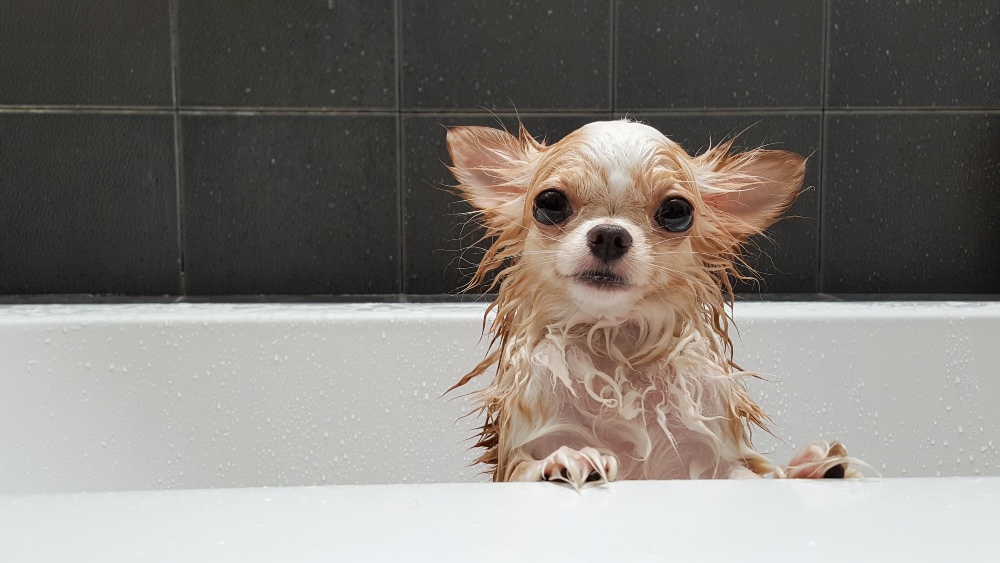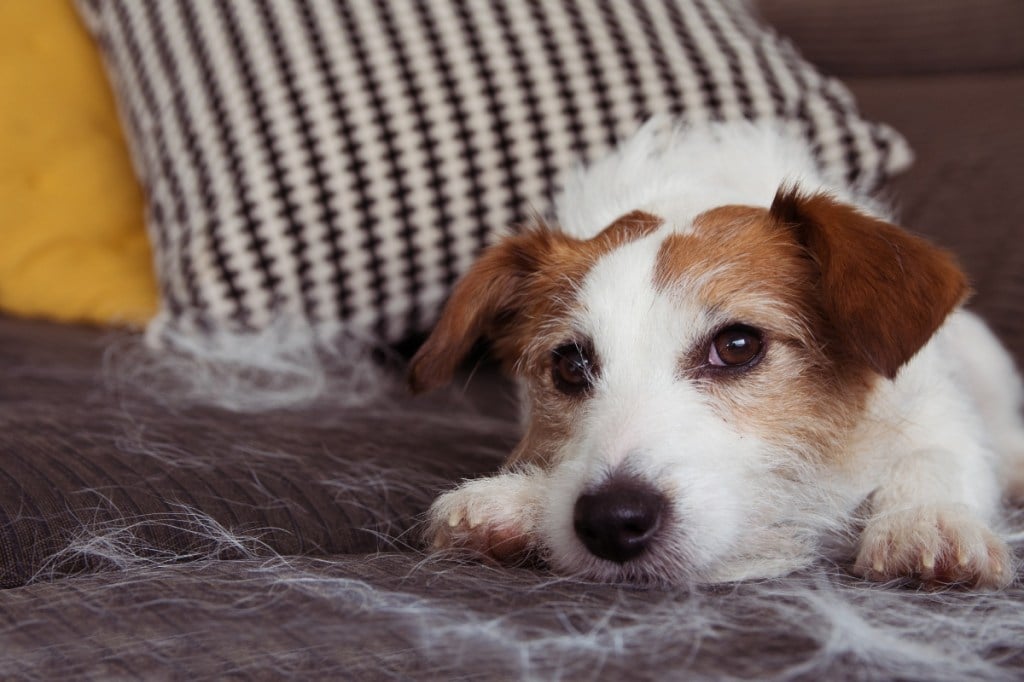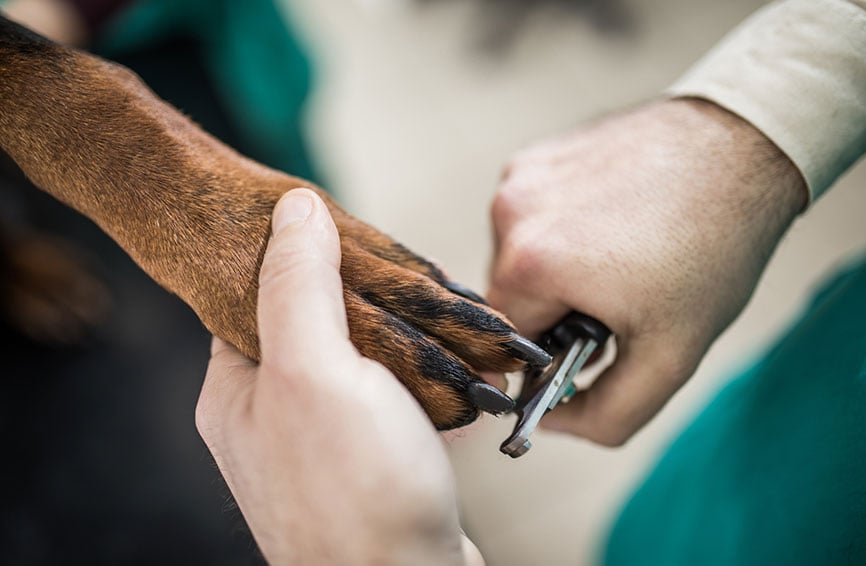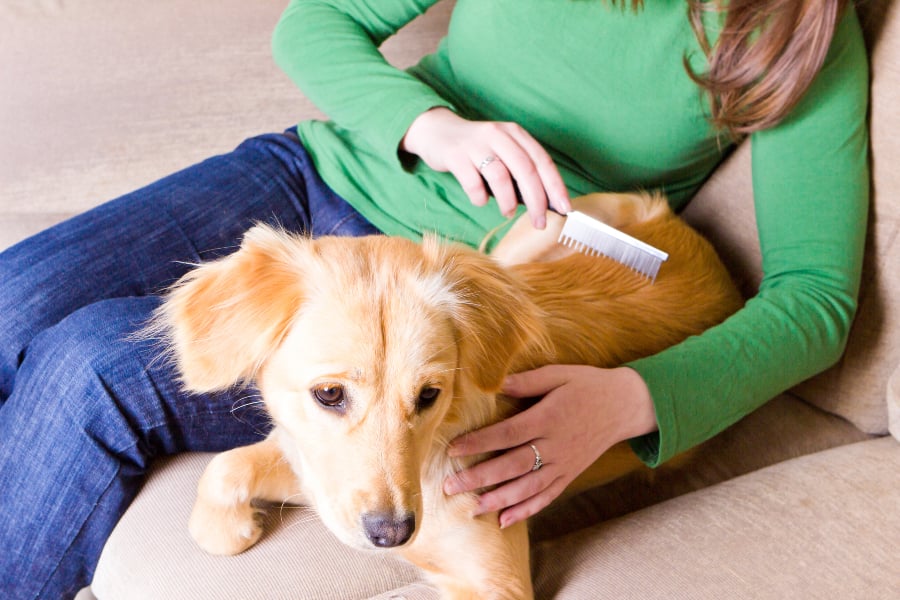When your dog has just rolled in something stinky, there’s no question he needs a bath. But what about dogs that don’t ever get particularly dirty—how often do they need a bath? And how do you know if you’re bathing them too much or not enough?
Unfortunately, there is no one-size-fits-all answer since every situation is different. Your dog’s bath schedule will depend on a number of factors, including their:
- Breed and coat: Long hair can trap more debris and some dog breeds have more oily coats that need regular bathing. Breeds with double coats may need less frequent bathing but more consistent brushing to remove excess hair.
- Activity level: Dogs that spend most of their time indoors will need fewer baths than those that regularly play outside, swim, dig, and roll in stinky stuff.
- Health: Dogs with allergies or skin conditions may be put on a regular bathing schedule with medicated shampoo.
That said, your dog should get a bath at least once every 3 months. Active, dirty dogs should be bathed as needed, but full shampoo baths should be given no more than once a week. Too frequent bathing depletes the skin’s natural oils, causing irritation and dryness. In situations when your pup doesn’t need a full bath but is still a little dirty, you can spot clean with grooming wipes or a wet washcloth. For muddy paws, just plop your pup in the tub and rinse off the dirty areas. When bathing as part of a medical treatment plan, your vet will provide advice on how often to bathe and what kind of shampoo to use.
Bathing tips
- Many dogs need brushing before a bath to detangle long hair and remove excess hair. Plus, by removing shed fur in advance, you won’t have to fish it out of the drain later!
- Tubs and sinks can be slippery so lay down a small towel or anti-slip bath mat for more traction.
- Use lukewarm to warm water; no one likes to take a cold shower! Water that is too hot can cause discomfort or even burn a dog’s sensitive skin.
- Start by washing your dog from the neck down, saving the head and ears for last. Once his head or ears get wet, he’s more likely to try to shake off. And while we’re talking about ears, try to avoid getting water in the ear canal.
- If using a blow dryer, only use low heat settings. For dogs afraid of the loud noise, stick to towel drying.
- On a cold day, towel dry your dog as much as possible, then wrap them in a fresh towel when they lay down to prevent the shivers as they dry.
Part of being a responsible dog owner includes regularly inspecting your dog’s body to be aware of any changes or health concerns. Because their fur flattens down when wet, bath time is a great opportunity to look for lumps, scratches, parasites or changes in your dog’s coat or skin health. Baths are also an extra excuse to give your dog a nice massage and bond with him.
It all boils down to using your best judgment to give your dog baths as needed. If more than three months has passed and your dog isn’t smelly or uncomfortable, it’s totally fine to delay the bath. If your dog doesn’t need a bath very frequently, be sure to regularly examine his body for abnormalities.








